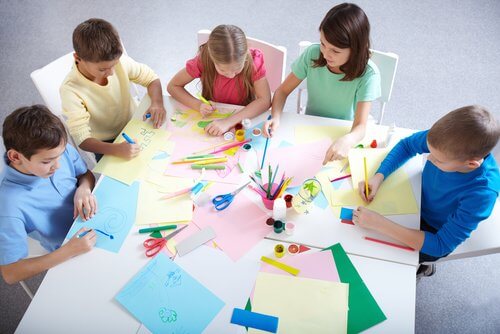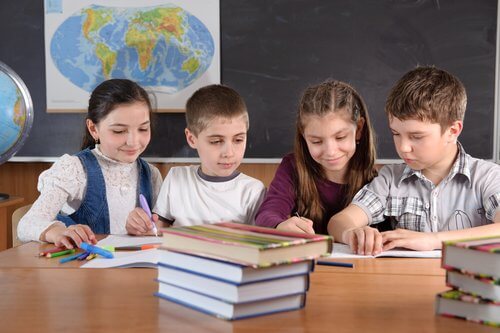What Is Collaborative Learning in the Classroom?

Collaborative learning in the classroom is a strategy and tool that is becoming more and more popular today.
This didactic strategy has a great impact on education worldwide. Furthermore, its use reveals that many more traditional educational structures are becoming obsolete.
What is collaborative learning?
To understand what collaborative learning is, it’s important to know that its pillars are based on social interaction. In other words, this type of learning revolves around group work and constant interaction among children and youth.
Collaborative learning in the classroom mainly seeks to maximize the aptitudes and capacities of each student through participation and the exchange of knowledge with their classmates.
The advantages of collaborative learning in the classroom
This learning model is a fundamental method for learning among new generations. Collaborative learning in the classroom has a number of benefits and advantages, no matter what level of education you’re looking at.
Among the advantages is the fact that it’s a new model that gives way to learning in this day and age. Therefore, it’s a method that motivates students to learn.
At the same time, as mentioned above, collaborative learning has to do with collective teamwork – in other words, working in groups. This context allows children to learn how to interact with others.
Working in groups allows students to become protagonists in their own learning and learn to cooperate with others to reach a common goal. As they progress, the abilities of each individual come to light.

Collaborative learning in the classroom also allows students to develop the skills to communicate with one another. These abilities won’t only be useful in the classroom, but in every other area of daily life as well.
How to apply collaborative learning in the classroom
How can educators motivate their students and make them eager to learn? What can they do to maximize each student’s potential and give them the opportunity to discover and use their abilities? How can teachers encourage interaction within the classroom?
There are many questions that teachers and professors ask themselves when it comes to educating children and youth. And all of them boil down to one answer: collaborative learning.
This, of course, gives way to another question: How to apply collaborative learning in the classroom.
“Collaborative learning in the classroom mainly seeks to maximize the aptitudes and capacities of each student through participation and the exchange of knowledge with their classmates”
It’s fundamental for educators to take the lead in the collaborative learning process. In other words, while it’s true that students learn by working with one another, they need a guide to orient them, assist them, and motivate them to learn.
Teachers are in charge of encouraging critical thinking in each of their students. This then allows them to analyze the different perspectives of their classmates objectively when they’re working as a group.

Tips for applying collaborative learning in the classroom
Encourage communication and dialogue
When it comes to learning, communication among students is fundamental. It must occur in a way that allows students to express themselves freely, without the fear of sharing what they think.
And this isn’t just about making sure they feel comfortable in the academic environment. It’s also important in developing the open-mindedness that children need in order to understand different positions.
Organize groups
As we can see, in order for this type of learning to be effective, it’s important to organize work groups. Therefore, educators need to make sure that the makeup of each group be similar and equitable, despite the fact that all students have different skills and abilities.
In conclusion, collaborative learning in the classroom is fundamental in the times we’re living in. It’s a truly beneficial strategy, both for teachers and students.
Combining and alternating this method with others is a great way to keep students’ level of motivation up and to leave obsolete educational structures behind.
This text is provided for informational purposes only and does not replace consultation with a professional. If in doubt, consult your specialist.








